
The Best High-Interest Savings Accounts in Canada
Chances are you use a chequing account for your day-to-day spending. But if you are looking to save up for your school, retirement, or that big day, savings accounts are important financial tools that can help you save up. Savings accounts work differently than other types of bank accounts and are designed with saving in mind. These accounts typically waive the monthly fees so you can build up savings without the bank taking a chunk each month, but in return, often have restrictive policies on what you can do with your money in the account, and typically charge fees on transactions using the account. This means savings accounts work best as a place you put your money away until you need it.
Below, you will find a rate comparison table so you can compare the best savings accounts in Canada.
Comparison table
| Bank Account | Rate | Minimum Deposit | Monthly Fees | Transactions |
| Simplii Financial | 6%
(i) |
None | None | No transaction fees |
| EQ Bank | 4% | None | None | Free withdrawals and e- transfers. |
| Motive Financial | 4.1% | None | None | 2 free transactions/month; $5 for each additional. $1 per each e-transfer |
| Laurentian Bank of Canada | 3% | None | None | Free withdrawals and e-transfers |
| Oaken Financial | 3.4% | None | None | Free withdrawals and e-transfers |
| MAXA Financial | 3.55% | $5 | None | 1 free transaction/month. $1.50 per each additional transaction and e-transfer |
| Alterna Bank | 2.25% | None | None | Free withdrawals and e-transfers |
| Wealthsimple Cash | 4% | None | None | Free withdrawals |
| Scotiabank | Up to 5.6%
(i)
|
None | None | $5 per transaction, free e-transfers |
| CIBC | 5.6%
(i) |
None | None | Free transfers between CIBC personal bank accounts. $5 on other transaction and E-transfers |
| BMO | 2.5%
(i) |
None, but a $200 monthly savings requirement is needed per month to apply for the higher interest rate | None | One free transfer out per month, $5 fee on every subsequent transfer or withdrawal |
| TD | 0.05% | None, but penalized for less than $5,000 monthly balance | None | $5 each, waived at $5,000 |
| RBC | 5.5%
(i) |
None | None | 1 Free RBC ATM withdrawal/month. $5 for most Transfers. $1 per e-transfer |
How to choose a high-interest savings account in Canada
There are a lot of high-interest savings accounts available to Canadians, but some are strategic places to save your money, and others are not efficient places for your money. Here are some things you should consider when looking for a high-interest savings account
- Interest Rate: banks talk about High-Interest savings accounts, yet some do not qualify what they mean by high interest. In our list of high-interest bank accounts that are offered, the interest ranged from anywhere from 0.05% to 2% for some promotional rates. We recommend looking for savings accounts that offer more interest, as interest determines how much you will earn by keeping your money in a Savings account. Remember, since inflation sits at around 2%, your money is becoming less valuable if it sits in an account with less than 2% interest.
- Withdrawals and Transfers: Withdrawals mean taking money out of an account, and transfers refer to moving money between accounts. While some online banks do not limit the number of withdrawals and transfers, some make money by requiring fees per withdrawal and transaction. While savings accounts are designed with storing your money for longer periods of time, the last thing you want is to be hit over the head with charges when you need to access your rainy-day fund.
- Accessibility: Some savings accounts put restrictions on the money you save on them as well, so knowing what a bank offers for its savings accounts are very important.
- Fees: While monthly fees are generally waived in favour of charging fees on withdrawals and transfers, some banks will hide fees or require a certain amount of money in your account to be exempt. Others will have significant fees on transactions between other banks or accounts.
Simplii Financial High Interest Savings Account
Simplii Financial is no stranger to solid promotional interest rates. If you sign up for a new high-interest savings account with Simplii before January 31st, 2024, you can earn a interest rate of 6% on eligible deposits, although that rate will drop afterwards, depending on the balance in the account. For example, accounts with a balance is $100,000 or under, the annual rate will drop to 0.4%.
Simplii FInancial offers no fees, no minimum balance, and no transaction fees as part of their High-Interest Savings Account. The Simplii website highlights the benefits of their high-interest savings account, describing the interest rates and the important information simply.
Simplii Financial is insured by the CDIC.
Simplii Financial services are not offered in Quebec.
Pros
- High promotional rate.
- No transaction fees.
Cons
- Low base rate for most accounts.
- E-transfers not supported for this savings account.
Motive Savvy Savings Account
Motive Financial is an online-only division of Canadian Western Bank, with a solid interest rate on their Savvy Savings Account of 4.1% on savings up to $5,000,000.
Motive’s Savvy Savings Account has no monthly fee, free deposits, free transfers between Motive accounts and two free monthly withdrawals. However, every subsequent withdrawal will cost you $5. Interac e-Transfers will also cost you $1 a pop.
The Motive Savvy Savings Account is insured by the CDIC.
Motive Financial is available to all Canadians outside of Quebec.
Pros
- Good current interest rate.
- 2 free transactions per month.
- Free deposits and unlimited transfers between Motive accounts.
Cons
- $5 fee for additional withdrawals.
- $45 dollar NSF fee.
- Up to $40 fee per year for dormant accounts.
EQ Bank Savings Plus account
EQ Bank is an online bank that specializes in savings accounts and GICs. EQ Bank is currently offering an interest rate of 2.5% on both their Savings Plus Account and their TFSA Savings Account, with an additional 1.5% bonus interest when you direct deposit your paycheque into your account.
With no monthly fees, free transactions, free e-Transfers, the Savings Plus Account is an excellent no-string-attached bank account that can help you save for the future. The Savings Plus account is great for Canadians who plan on travelling once it is safer to do so, offering cheap International money transfers with no hidden fees or markups. EQ’s TFSA Savings Account is a great way to make the most of your savings, with no fees as long as you do not exceed the annual maximum contribution of $6,000.
EQ Bank is CDIC insured.
Pros
- Solid 2.5% Interest rate.
- Free electronic funds transfers and Interac e-transfers.
- No fees for NSF and Dormant accounts.
Cons
- Savings Plus Account has a maximum $200,000 balance.
LBC Digital High Interest Savings Account
Laurentian Bank has served Quebecois since 2003, but with their digital offering LBC Digital, Canadians across the country can save with their High-Interest Savings Account. LBC Digital’s HISA offers an Interest rate of 3%.
This savings account comes with no monthly account fees, no minimum deposit, free withdrawals and e-transfers. However, LBC’s HISA has some fees that are not great if you find yourself hit with them, including a $50 NSF fee and up to $40 dormant account fee.
LBC Digital protects your money with CDIC insurance on their accounts.
The LBC Digital High-Interest Savings Account is available to all Canadians.
Pros
- Great base 3% Interest rate.
- Free electronic transfers.
Cons
- The account is subject to other fees, like NSF and Dormancy fees.
Oaken Savings Account
Oaken Financial is the direct banking arm of Home Trust that specializes in GICs. The Oaken Savings Account offers an impressive interest rate of 2.25%, without the gimmicks or confusing fine print.
Oaken offers no monthly fees and no monthly balances and claims theirs no limit to the number of transactions you can make with this account free of charge. Additionally, Oaken has no extra fees when you use an external ATM. Oaken is insured by the CDIC, and if you open both a Home Bank and a Home Trust Company, you can have up to twice the amount of money insured than other banks.
Oaken Savings accounts are available in Canadian provinces, except Quebec.
Pros
- Free unlimited transactions.
- No additional fees for external ATM use.
Cons
- Does not list all of its fees on its website.
MAXA High Interest Savings Account
MAXA Financial is a division of the Westoba Credit Union, that currently offers a High-Interest Savings Account with an interest rate of 3.55%. MAXA also offers GICs, TSFAs, RRSPs and RRIFs in addition to their savings account.
MAXA offers 1 free transaction per month, including Interact e-transfers, and each subsequent transaction will cost the user $1.50. While this fee is lower, it can certainly add up. MAXA offers no monthly fees and no minimum balances to boot.
While not insured by the CDIC, your deposits are insured by the Deposit Guarantee Corporation of Manitoba.
The MAXA HISA is available across Canada.
Pros
- Decent 3.55% interest rate.
- 1 free transaction per month.
Cons
- $1.50 on subsequent transactions.
Alterna Bank High-Interest eSavings account
Alterna Bank is a division of Alterna Savings, an Ottawa-based Credit Union that dates back to 1908. Alterna Bank’s high-interest eSavings account offers an interest rate of 2.25% on balances up to $250,000.
Alterna Bank has no monthly fees, no monthly balance, unlimited bill payments, transfers and debits, free internal transfers, and unlimited free e-Transfers per month. Alterna also offers joint account options too. Alterna Bank customers can access ATM’s in the EXCHANGE network, including the National Bank of Canada and HSBC ATMs.
With Alterna Bank, you can rest easy knowing your money is CDIC insured.
Alterna Bank is available throughout Canada, including Quebec.
Pros
- Unlimited free bill payments, internal transfers and Interac e-transfers.
- Range of ATM’s available for withdrawals.
Cons
- The website features little accessible information about all the fees and restrictions.
Wealthsimple Cash
Wealthsimple is a robo-advisor and wealth management platform that aims to give people the investment and saving tools they need to make the most out of their money. Wealthsimple Cash is more of a hybrid account than strictly a high-interest savings account, giving Canadians the option to enjoy chequing account features with an interest rate of 4%.
Wealthsimple Cashoffers simple banking with zero fees, no account minimums and no fees on transactions. Additionally, soon Wealthsimple will offer direct deposits, bill pay and pre-authorized debits, as well as the Wealthsimple Cash card, which will make managing your money simple, as you can use Wealthsimple Cash for saving and chequing purposes.
While Wealthsimple Cash is not CDIC insured, it is insured by the Canadian Investor Protection Fund.
Wealthsimple Cash is available to all Canadian residents.
Pros
- 4% interest on a hybrid account.
- Zero fees.
Cons
- Since Wealthsimple Cash is in Beta, many features are not available right now.
The big banks
Chances are you have a bank account already with one of Canada’s bigger banks, so you might be wondering if that bank offers a high-interest savings account. Most of the bigger banks in fact do offer high-interest savings account, but the bad news is that these accounts pale in comparison to those offered by online banks. While these banks may offer nice bonuses for existing customers, including unlimited transactions to other accounts in your name with the same bank, these banks often charge more for transactions and are more restrictive. Overall, we recommend using an online bank for high-interest savings accounts, however, there may be advantages to opening a HISA with a more familiar bank.
CIBC eAdvantage Savings Account
As Canada’s bigger banks go, right now, CIBC offers one of the better high-interest savings accounts. As a limited time offer, new deposits into CIBC’s Tax Advantage Savings Account can earn 5% interest if you sign up before March 31st, 2024. Unfortunately, the base interest starts at just 0.65%.
With the eAdvantage Savings Account, customers can enjoy no monthly fees and free transfers amount your other CIBC personal accounts, which is attractive to prior CIBC customers. However, other transactions will cost you $5 each, including debit purchases, withdrawals and Interac e-Transfers. While CIBC’s eAdvantage might be one of the best HISA’s offered by Canada’s bigger banks, you can get better rates and accessibility with online banks.
Pros
- Solid promotional interest rate of 5%
- Free transfer among your CIBC accounts in your name.
Cons
- Each other transactions cost $5.
- Least up-front bank about their HISA terms and conditions.
Scotiabank Momentum Plus Savings Account (360-premium)
The Scotiabank Momentum Plus Savings account is a tiered savings account that gives a variable interest rate. Right now, banking with Scotiabank can earn you a bonus interest rate of 3.4% on eligible deposits for the first three months after creating your account. With a regular interest rate of 1.3%, an Ultimate Package bonus of 0.1%, and a Premium Period Interest that increases the longer you do not use a debit transaction with the account to a max 1.25% for a Premium Period of 360 days or longer, you can earn a promotional combined interest rate of 5.6%!
Scotiabank requires no monthly account fees or minimum monthly balances required for their Momentum Plus Savings Account. You also get Unlimited self-service transfers, but each non-Self-Service transaction is going to cost you $5.
You can get decent interest rates with Scotiabank, but the number of hoops you need to jump through for this rate does not seem worth it in the end.
Pros
- Maximum of 5.6% interest is one of the higher interest rates, if not extremely conditional.
- Unlimited self service transfers.
Cons
- Tiered interest rate is very conditional.
- Other transactions cost $5.
BMO Savings Builder Account
BMO’s Savings Builder Account offers a base interest rate of 0.5%. However, a bonus interest rate of 2.5% can be attained for months you increase the monthly balance of the account by $200, for a total maximum interest of 3%. Of course, this is nothing to write home about.
BMO offers one free transfer out of the Savings Builder Account per month, and withdrawals and additional transfers out are going to cost $5. You will save with no monthly fee, but that is the bare minimum that a savings account offers. This account is also very limited, and you cannot add this account to a Family Bundle. There is nothing we can find that makes BMO a more attractive savings account option for non-BMO bankers.
Pros
- Tiered savings account promotes strong saving practices.
- One free transfer out per month.
Cons
- Other transactions cost $5.
- Cannot be added to the Family Bundle.
RBC High Interest eSavings
Until April 10th, 2024, RBC is currently offering a promotional interest rate of 5.5% for the first three months, which drops to 3.8% afterwards. While the promotional rate is high, the fact the base rate is also generous means this is an account that you can really appreciate.
RBC has no monthly fee on their High-Interest eSavings account and offers 1 free RBC cash Withdrawal per month. Additionally, you have free electronic self-serve transfers to other RBC accounts in your name. Any debit withdrawal past your monthly limit is $5 and Interact e-Transfers are $1.
Pros
- High promotional and base interest rate.
- Free self-serve transfers among RBC accounts in your name.
Cons
- $5 withdrawals after the first withdrawal.
- E-transfers cost $1 each.
TD High Interest Savings Account
TD Bank offers what they call a “high-interest savings account,” but the reality is that this is misleading. TD offers a rate in their High-Interest Savings Account of 0.05%, but only if you have a balance of $5000 in the account. With the ePremium savings account, you earn 1% interest only if you deposit $10,000. Most Canadians will see a higher interest rate on TD’s Every Day Savings Account, which offers a flat interest rate of 0.01%. To call this “high interest,” when online banks offer interest rates upwards of 2 or 3% is quite underwhelming.
While TD offers no monthly fees, Transaction fees are $5 per transaction and are only waived if your account has a minimum monthly balance of $5,000. There is simply no advantage in opening a High-Interest Savings Account with TD.
Pros
- There are quite literally no advantages to opening a savings account with TD over other banks.
Cons
- Tiered savings account with very little interest available only when a certain amount is deposited.
- Expensive transaction fees.
What is a high-interest savings account?
Interest rates are payments that the borrowers pay to a lender above the amount lent, at a particular rate. For example, in terms of a mortgage, interest is paid by the homebuyer to the mortgage lender on the amount borrowed to buy the house. However, in the situation of savings accounts, you are the lender – the bank uses the cash you put into a savings account for giving other loans, and pays a little interest back, so you see a positive return on your deposits in a savings account. Most regular savings accounts offer very little in terms of interest rates, but more and more high-interest savings accounts are becoming accessible for Canadians.
Savings accounts will typically not generate significant returns on your savings and do not replace the financial benefit of maintaining a diverse investment portfolio, for example. However, there are many benefits of opening a high-interest savings account. The main one is high-interest savings accounts help keep your money from being devalued by deflation. Another important benefit to think about is the fact that savings accounts are automatically insured up to $100,000, so you do not need to worry about losing the money you put in a savings account.
Interest on savings accounts is generally calculated daily and charged monthly. This means every day the amount that grows interest increases, meaning each month, you earn more and more interest. We looked throughout Canadian online banks to find you the highest interest in Canada.
What types of savings accounts can you open in Canada?
In addition to high-interest savings accounts, there are many other savings account types available to Canadians to help them achieve their financial goals.
Tax Free savings account (TFSA)
Most savings accounts that accrue interest are subject to being taxed, which can take a big chunk out from your earnings from interest. A Tax-Free Savings account is just that: an account that allows people to contribute and withdraw their money without having to pay taxes on it. In exchange, the Canadian government places a limit on how much money you can deposit in a TSFA per year.
Registered Education Savings Plan (RESP)
Are you thinking about setting up a college fund for the youngster with potential in your life? This is the account for that. 20% of your contributions to an RESP (up to $2500) is matched by the Canadian Education Savings Grant. The money withdrawn from an RESP is taxable income for the beneficiary, but students usually maintain a low-enough income that this does not impact the beneficiary that much.
Since you can hold cash and investments in an RESP, you can diversify the account to suit your needs.
Registered Retirement Savings Plan (RRSP)
Likewise, are you thinking forward to retirement? A registered retirement savings plan is a government-registered account that helps Canadians gear up for retirement. An RRSP allows you to defer paying taxes until retirement and allows you to earn interest along the way.
You can put any amount up to the contribution limit into the account yearly, which usually is 18% of your earned income the previous year.
Youth
Youth accounts tend to be opened by adults for children in their life, to help build for that child’s future, and teach kids about the financial world.
U.S. Savings Accounts
If you are a snowbird, or travel to the US often for business purposes, having an account in US dollars makes sense. You can skip the currency exchange with a US Savings account from most major banks.
Hybrid Savings Account
Hybrid accounts combined savings and chequing accounts, to provide a little bit of the best of both worlds: high-interest rates on held funds with more transactions that chequing accounts offer, like debits, bill payments, withdrawals and e-Transfers.
Common high-interest savings account questions
Which Canadian bank has the best high-interest savings account?
If there was a single answer to this question, I would not have written this article! Banks offer accounts with different fees and restrictions, so there are different banks that will appeal to different kinds of people. EQ Bank’s Savings Plus Account was our most favoured account, due to its generally high-interest rate and lack of fees on withdrawals and E-transfers.
What’s the importance of having a savings account?
Savings accounts are accounts with saving money in mind. They offer higher interest rates than the minimum interest you might get with a checking account, and often forgo monthly fees. Savings accounts are ideal for saving your money.
Are high-interest savings accounts safe?
Generally, high-interest accounts are safe places to store money. In a savings account, your first $100,000 is insured by the Canadian Deposit Insurance Corporation (CDIC), and accounts offered by credit unions are often insured by provincial insurers.
What are the pros and cons of high-interest savings accounts?
The main pro is the interest rate, which lets your savings build up with time. Just like most other savings accounts, another pro is the lack of monthly fees. The main cons are the added restrictions and fees, with withdrawals and transfers often have added fees. However, this usually is not too big of a dealbreaker, as savings accounts are supposed to be a place to save money, and you can always go for a chequing account for your day-to-day spending.
High-interest savings account vs. traditional savings account: What’s the difference?
The higher-than-average interest rate of a HISA is what differentiates it from traditional savings accounts. Both will generally offer some form of interest and no monthly fees but may have fees for withdrawals.
Are high-interest savings accounts taxable?
Taxes are paid on savings accounts earnings, unless the account is in a registered tax shelter, like a tax-free-savings account. Come tax season, your financial institution will send you a T5 that specifies the amount of income made from the interest on your deposits, and you will need to declare the full amount on your tax return.
Do I pay any fees for withdrawing from a HISA?
Different high-interest saving accounts will have different fees for transactions, so it is important that you read the fine print of the different HISA’s you are considering. Usually, HISA’s are meant to let interest accrue on your money, so the trade-off is that many banks offering High-interest savings accounts charge additional fees on withdrawals. However, all banks will have different fees.
Interest rates vs. Inflation: What’s the relationship?
Inflation is the measure of how the prices of goods and services rise, and how a currency’s purchasing power decreases over time. Every currency undergoes inflation, but too much or too little inflation has negative impacts on the economy. The Bank of Canada aims to keep the inflation rate around two percent every year.
Interest rates and Inflation are inherently connected. If the inflation rate is higher than the Bank of Canada’s target, they may adjust the inflation rate accordingly. The Bank of Canada writes on their website: “Higher interest rates encourage saving and discourage borrowing and, in turn, spending. In response, companies increase their prices more slowly or even lower them to encourage demand. This reduces inflation.”
You can read more about how inflation works in Canada here.
Are there any savings accounts for seniors? Are there any savings accounts for students?
Yes, some banks and credit unions offer specialized accounts for seniors and students alike. However, often, these accounts generally tend to be chequing accounts – students and seniors are some of the least likely people to need to save money. However, you can open youth savings accounts to prepare your kids for post-secondary and open RRSP accounts to save up for your retirement.
Does Opening a Savings Account Affect Your Credit?
Your credit score will only be impacted when opening a bank account if the bank performs a “hard inquiry” into your line of credit. This may happen when creating a chequing account, or adding features that involve credit like overdraft protection but should not need to happen when opening a savings account. However, in the case that your credit is affected, it should only be a minor impact and you would be able to recover in no time.
Is a high-interest savings account worth it?
It depends. Savings accounts are great places to store money, as they offer insurance for the first $100,000, and the extra interest feels nice too. But considering any money made in your savings accounts is usually taxed, and an average inflation rate between 1-3% per year, you likely will not see any surplus income unless your interest rate is higher than the inflation rate and any taxes you pay. Anything above 2% interest is worth looking into, but if you are looking to put your money to work for retirement or your future, a high-interest savings account will likely not be enough.
Read more

How to Buy Polkadot in Canada
Learn how to buy the new and unique cryptocurrency Polkadot.

What is Dogecoin, and How Does it Work?
They cryptocurrency market is full of coins. This article looks at Dogecoin, the meme coin of cryptocurrency.

TFSA vs RRSP: Comparing the Two
A TFSA and RRSP are two ways to save money. This article will compare the two accounts.
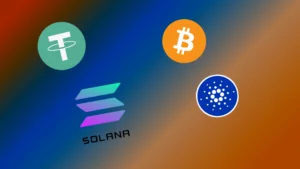
The Best Cryptocurrencies To Invest In This Year
Here are some of the best cryptocurrencies to invest in for 2022.
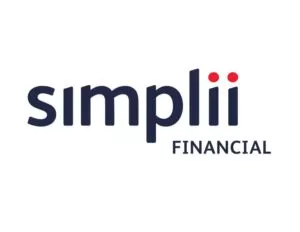


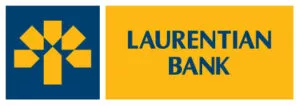
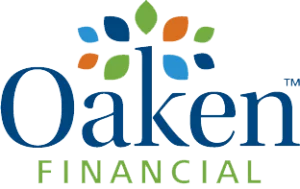


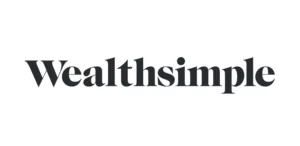
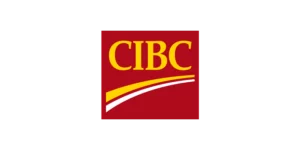

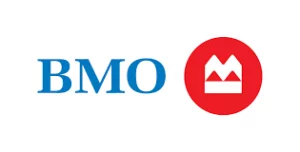
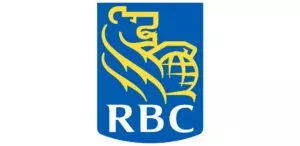
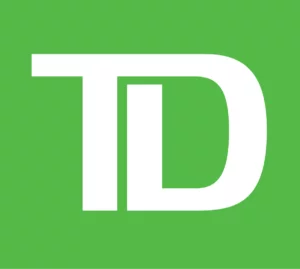
augmentin with pregnancy unpublished data, and such vectors may be more suitable for conditional RNAi in primary cells
Here is my website https://www.youtube888.com/